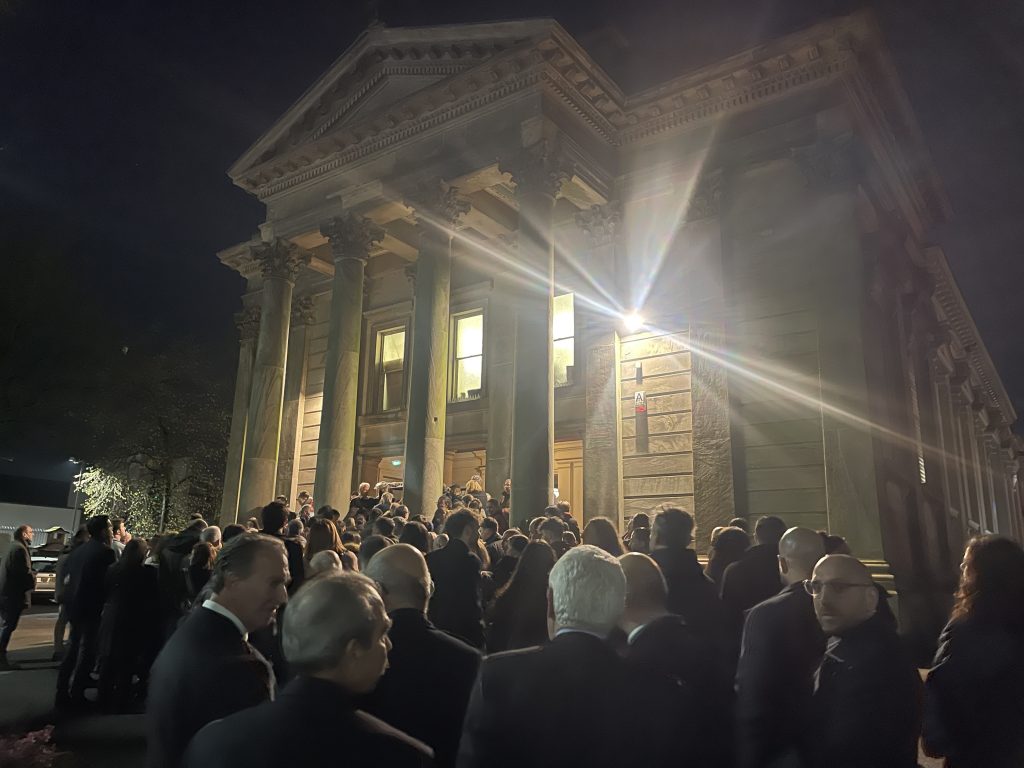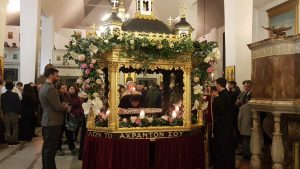
The Greek Easter celebrations are from Friday 14th- Sunday 16th April 2023 at the Greek Orthodox Church of the Annunciation based on Bury New Road.
The Eastern Christian church’s calendar’s most sacred and important season is ‘Pascha,’ which marks the transition from winter to spring. It is also the day when Orthodox Christians commemorate Christ’s resurrection.
Hundreds of people gathered in Salford on Friday and Saturday to celebrate the festival, which has a long history of tradition.
The ceremony concluded at 2am on Sunday 16th April at the Greek Orthodox church of Annunciation, to commemorate a week of celebrations throughout Holy Week.
George Antoniades 55, one of the members of the Greek orthodox community that visited the church on Holy Saturday said that “Greek Easter is so important to our religion because it represents the resurrection of Christ, the start of a new beginning, a new year and an opportunity for us to reset and get past indiscretions and also it is an opportunity for us to come together and meet up.”
The services on Friday and Saturday evening were led by the Reverend Presbyter Demetrios Konte. On Easter Sunday, the church hosts a feast for people to come and enjoy Greek Easter together.
Elena Gabrilatsou 45, another member of the Greek orthodox church said “well, we were brought up with Holy Week being one of the biggest weeks of the Greek Orthodox year. It’s about community, it’s about religion, it’s about understanding the story of Jesus.
“I feel quite emotional tonight because its the first time my kids have experienced Holy Saturday.”
Easter is implemented on a different day in Eastern Orthodox churches compared to Western churches, although sometimes the dates can coincide.
Most Christians base Easter dates on the Gregorian calendar which was introduced in 1582.
However, Eastern Orthodox churches base the easter dates on the previous Julian calendar, which was in effect since 45BC.
Before the easter celebrations begin, Orthodox Christians have to prepare with a great lent of a 40 days period of that consists of fasting and self- reflecting.
The 40 day period starts on clean Monday which begins seven weeks before Easter Sunday and ends on a Lazarus Saturday, which is eight days before Easter Sunday.
Animal products, such as meat, milk, cheese, eggs, and butter, are not permitted to those who observe the strict Lenten fast. Fish can, however, be eaten on certain days.
Palm Sunday, one week before Easter, commemorates the arrival of Jesus Christ in Jerusalem, and is followed by Holy Week, which concludes on Easter Sunday, or Pascha.
Good Friday is a solemn day, and chanting will be heard from the speakers of all churches.
Later in the evening, a wooden structure known as the Epitaphios, which means “on the tomb,” is covered with a plethora of colourful flowers.

Photo taken by Natalia Petrou
Following the church service, the Epitaphios and the priest lead a street procession through the streets with thin tapered lit candles whilst chanting psalms.
People gather in their local churches before Midnight on Holy Saturday with white candles, lighting their flame from the priest’s Holy light at midnight.
It is a big celebration at midnight, with people greeting each other with “Christos Anesti,” which means Christ has risen, to which you would respond with “Alithos Anesti,” which means he has indeed risen.
After the Holy Saturday ceremony, people usually break their lental fast with Tsoureki Paschalino, a sweet bread, or Avgolemono, an egg and lemon soup.
Easter Sunday is a day of feasting and family gatherings. To represent Christ’s blood, hard-boiled eggs are dyed red. The egg is a symbol in and of itself. The hard shell represents Jesus’ sealed womb, the cracking of which represents his resurrection from the dead. People tend to crack the eggs on one another, the last egg standing is seen as lucky.















One Comment